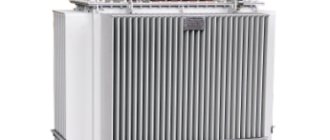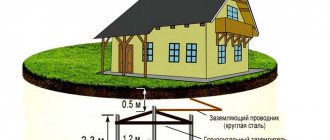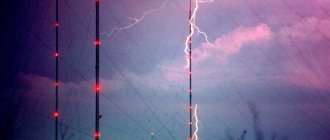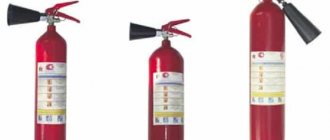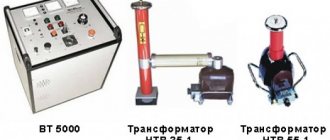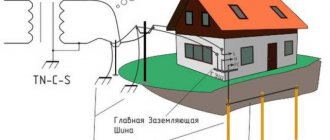Seventh edition
The book contains requirements for the installation of electrical lighting in buildings, premises and structures for various purposes, open spaces and streets, as well as requirements for the installation of advertising lighting. Contains requirements for electrical equipment of residential and public buildings, entertainment enterprises, club institutions, and sports facilities.
The book is intended for engineering and technical personnel involved in the design, installation and operation of electric lighting installations, as well as electrical equipment for special installations.
Content
Section 1. General rules
Chapter 1.1. a common part
Chapter 1.2. Power supply and electrical networks
Chapter 1.3. Selection of conductors by heating, economic current density and corona conditions
Chapter 1.4. Selection of electrical devices and conductors according to short circuit conditions
Chapter 1.5. Electricity metering
Chapter 1.6. Electrical measurements
Chapter 1.7. Grounding and protective electrical safety measures
Chapter 1.8. Acceptance testing standards
Chapter 1.9. Insulation of electrical installations
Section 2. Electricity sewerage
Chapter 2.1. Electrical wiring
Chapter 2.2. Current conductors with voltage up to 35 kV
Chapter 2.3. Cable lines with voltage up to 220 kV
Chapter 2.4. Overhead power lines with voltage up to 1 kV
Chapter 2.5. Overhead power lines with voltage above 1 kV
Appendix to chapters 2.3, 2.4, 2.5: Requirements for information signs and their installation
Appendix to Chapter 2.5: Guidelines for the design of supports, foundations and foundations of overhead lines
Section 3. Protection and automation
Chapter 3.1. Protection of electrical networks with voltage up to 1 kV
Chapter 3.2. Relay protection
Chapter 3.3. Automation and telemechanics
Chapter 3.4. Secondary circuits
Section 4. Switchgears and substations
Chapter 4.1. Switchgears with voltage up to 1 kV AC and up to 1.5 kV DC
Chapter 4.2. Switchgears and substations with voltage above 1 kV
Chapter 4.3. Converter substations and installations
Chapter 4.4. Battery installations
Section 5. Electric power plants
Chapter 5.1. Electrical machine rooms
Chapter 5.2. Generators and synchronous compensators
Chapter 5.3. Electric motors and their switching devices
Chapter 5.4. Crane electrical equipment
Chapter 5.5. Electrical equipment of elevators
Chapter 5.6. Capacitor installations
Section 6. Electric lighting
Chapter 6.1. General part (+ Preface)
Chapter 6.2. Interior lighting
Chapter 6.3. Outdoor Lighting
Chapter 6.4. Illuminated advertising, signs and illumination
Chapter 6.5. Lighting control
Chapter 6.6. Lighting devices and electrical installation devices
Section 7. Electrical equipment of special installations
Chapter 7.1. Electrical installations of residential, public, administrative and domestic buildings
Chapter 7.2. Electrical installations of entertainment enterprises, clubs and sports facilities
Chapter 7.3. Electrical installations in hazardous areas
Chapter 7.4. Electrical installations in fire hazardous areas
Chapter 7.5. Electrothermal installations
Chapter 7.6. Electric welding installations
Chapter 7.7. Peat electrical installations
Chapter 7.10. Electrolysis and electroplating plants
Appendix 1 to Chapter 7.3
Appendix 2 to Chapter 7.3
Appendix 3 to Chapter 7.3
Preface
Date of introduction 2003-01-01
Developed taking into account the requirements of state standards, building codes and regulations, recommendations of scientific and technical councils for reviewing draft chapters. The draft chapters were reviewed by the working groups of the Coordination Council for the revision of the EMP.
Prepared by JSC VNIIE.
Agreed in accordance with the established procedure with the Gosstroy of Russia, Gosgortekhnadzor of Russia, RAO UES of Russia (JSC VNIIE) and submitted for approval by Gosenergonadzor of the Ministry of Energy of Russia.
Approved by the Ministry of Energy of the Russian Federation, order No. 204 dated July 8, 2002.
Chapter 1.1 of the Sixth Edition of the Electrical Installation Rules (PUE 6) is no longer in force from January 1, 2003.
“Rules for the construction of electrical installations” (PUE) of the seventh edition, due to the long period of processing, are issued and put into effect in separate sections and chapters as work on their revision, coordination and approval is completed.
The requirements of the Electrical Installation Rules are mandatory for all organizations, regardless of ownership and organizational and legal forms, as well as for individuals engaged in entrepreneurial activities without forming a legal entity.
Keywords: PUE, PUE 7, PUE edition, PUE 7 edition, PUE download, PUE rules, PUE electrical installations, PUE electrical installation rules, PUE cables, PUE 7 download, PUE grounding, PUE 7 electrical installation rules, PUE 7 edition download
Contents of PUE 7
Section 1. General rules Chapter 1.1.
General part Chapter 1.2. Power supply and electrical networks Chapter 1.3. Selection of conductors based on heating, economic current density and corona conditions Chapter 1.4. Selection of electrical devices and conductors according to short circuit conditions Chapter 1.5. Electricity metering Chapter 1.6. Measurements of electrical quantities Chapter 1.7. Grounding and protective electrical safety measures Chapter 1.8. Acceptance test standards Chapter 1.9. Insulation of electrical installations Section 2. Electricity sewerage Chapter 2.1. Electrical wiring Chapter 2.2. Current conductors with voltage up to 35 kV Chapter 2.3. Cable lines with voltage up to 220 kV Chapter 2.4. Overhead power lines with voltage up to 1 kV Chapter 2.5. Overhead power lines with voltages above 1 kV Section 3. Protection and automation Chapter 3.1. Protection of electrical networks with voltage up to 1 kV Chapter 3.2. Relay protection Chapter 3.3. Automation and telemechanics Chapter 3.4. Secondary circuits Section 4. Distribution devices and substations Chapter 4.1. Switchgears with voltage up to 1 kV AC and up to 1.5 kV DC Chapter 4.2. Switchgears and substations with voltages above 1 kV Chapter 4.3. Converter substations and installations Chapter 4.4. Battery installations Section 5. Electric power installations Chapter 5.1. Electrical machine rooms Chapter 5.2. Generators and synchronous compensators Chapter 5.3. Electric motors and their switching devices Chapter 5.4. Electrical equipment of cranes Chapter 5.5. Electrical equipment of elevators Chapter 5.6. Capacitor installations Section 6. Electric lighting Preface Chapter 6.1. General part Chapter 6.2. Interior lighting Chapter 6.3. External lighting Chapter 6.4. Illuminated advertising, signs and illumination Chapter 6.5. Lighting control Chapter 6.6. Lighting devices and electrical installation devices Section 7. Electrical equipment of special installations Chapter 7.1. Electrical installations of residential, public, administrative and domestic buildings Chapter 7.2. Electrical installations of entertainment enterprises, clubs and sports facilities Chapter 7.3. Electrical installations in hazardous areas Chapter 7.4. Electrical installations in fire hazardous areas Chapter 7.5. Electrothermal installations Chapter 7.6. Electric welding installations Chapter 7.7. Peat electrical installations Chapter 7.10. Electrolysis installations and electroplating installations PUE 7, read
Next page
PUE (electrical installation rules)
PUEs operate in the form of separate sections and chapters of the 7th edition and current sections and chapters of the 6th edition, current edition
| 6th edition | 7th edition |
| Section 1. General rules | |
| Chapter 1.3 Selection of conductors by heating, economic current density and corona conditions Chapter 1.4 Selection of electrical devices and conductors by short circuit conditions Chapter 1.5 Electricity metering Chapter 1.6 Measurements of electrical quantities | Chapter 1.1 General partChapter 1.2 Electrical supply and electrical networksChapter 1.7 Grounding and protective measures for electrical safetyChapter 1.8 Acceptance test standardsChapter 1.9 Insulation of electrical installations |
| Section 2 Electricity sewerage | Section 2. Electricity transmission and |
| Chapter 2.1. Electrical wiringChapter 2.2. Current conductors with voltage up to 35 kVChapter 2.3. Cable lines with voltage up to 220 kV | Chapter 2.4 Overhead power lines with voltage up to 1 kV Chapter 2.5 Overhead power lines with voltage above 1 kV |
| Section 3 Protection and automation | |
| Chapter 3.1 Protection of electrical networks with voltage up to 1 kV Chapter 3.2 Relay protection Chapter 3.3 Automation and remote control Chapter 3.4 Secondary circuits | |
| Section 4. Switchgears and substations | |
| Chapter 4.3. Converter substations and installationsChapter 4.4. Battery installations | Chapter 4.1 Switchgear with voltage up to 1 kV AC and up to 1.5 kV DCChapter. 4.2 Switchgears and substations with voltages above 1 kV |
| Section 5 Electric power plants | |
| Chapter 5.1. Electrical machine rooms Chapter 5.2. Generators and synchronous compensators Chapter 5.3. Electric motors and their switching devices Chapter 5.4. Electrical equipment of cranes Chapter 5.5. Electrical equipment of elevators Chapter 5.6. Capacitor units | |
| Section 6 Electric lighting | |
| Chapter 6.1. General partChapter 6.2. Interior lightingChapter 6.3. External lightingChapter 6.4. Illuminated advertising, signs and illuminationChapter 6.5. Lighting controlChapter 6.6. Lighting devices and electrical installation devices | |
| Section 7. Electrical equipment of special installations | |
| Chapter 7.3. Electrical installations in hazardous areas Chapter 7.4. Electrical installations in fire hazardous areas Chapter 7.7. Peat electrical installations | Chapter 7.1 Electrical installations of residential, public, administrative and domestic buildings Chapter 7.2 Electrical installations of entertainment enterprises, clubs and sports facilities Chapter 7.5 Electrothermal installations Chapter 7.6 Electric welding installations Chapter 7.10 Electrolysis installations and galvanic coating installations |
The requirements of the PUE 7th and 6th editions are mandatory for all organizations, regardless of ownership and organizational and legal forms, as well as for individuals engaged in entrepreneurial activities without forming a legal entity.
